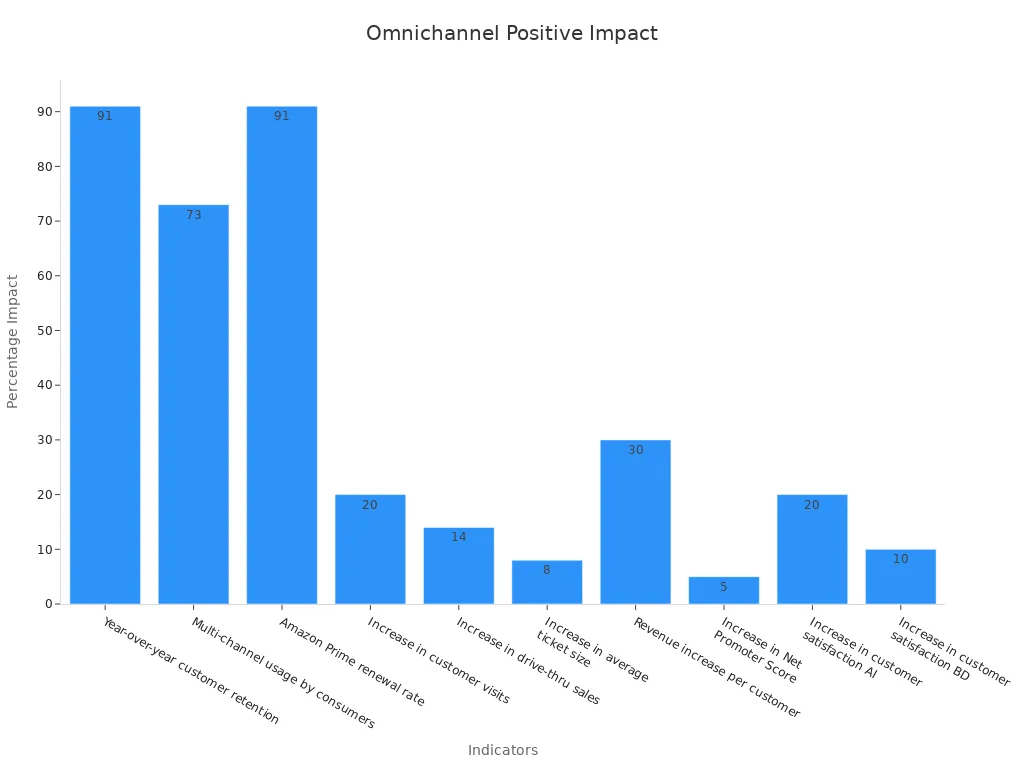5 Steps to Distinguish Customer and Client in Your Business

You likely ask what is the difference between a customer and a client as you serve people across many channels. Using the right term helps you build trust and show professionalism. In 2025, businesses that use precise language improve customer experience and avoid confusion. For example, Sobot AI supports over 6 million online communications daily. Sobot gives you tools to manage every contact, so you can address each person’s needs with clarity.
What is the Difference Between a Customer and a Client

Key Definitions for 2025
You may wonder what is the difference between a customer and a client as you build your business in 2025. The answer starts with clear definitions. What is a customer? A customer is someone who buys a product or service, often through a single transaction. Customers expect fast, personalized, and transparent experiences. In 2025, industry research shows that 81% of consumers say trust shapes their buying decisions. Nearly 74% will buy based on their experience, and personalization can boost revenue by up to 15%. These facts show that a customer is more than a buyer—they want trust, transparency, and technology-driven service. Sobot’s omnichannel solution helps you meet these expectations by unifying all customer interactions in one workspace.
What is a client? A client forms a deeper, ongoing relationship with your business. Clients often receive tailored advice, long-term support, or specialized services. For example, a financial advisor or a business consultant works with clients over time, building trust and understanding. In Sobot’s platform, you can manage both customer and client relationships, ensuring each group gets the right level of attention and service.
Tip: Use Sobot’s unified workspace to track both customer purchases and client engagements, so you never miss a detail.
Relationship Types in Business
Understanding what is the difference between a customer and a client helps you manage your business relationships better. Customers usually have short-term, transactional interactions. Clients expect ongoing support and personalized solutions. The difference matters because it shapes how you communicate and serve each group.
In 2025, business relationships have become more dynamic. Data shows that companies using agile feedback and recognition programs see higher engagement and retention. For example, 360-degree feedback boosts team satisfaction, and employees who feel heard are five times more likely to give their best effort. These trends highlight the importance of building strong client relationships, not just focusing on one-time customer transactions.
Sobot’s omnichannel tools let you map out these relationship types. You can automate routine customer support while giving clients the personal touch they expect. This approach helps you deliver the right experience, whether you serve a customer making a quick purchase or a client seeking long-term value.
Client vs Customer in Sobot’s Omnichannel Solutions
Application Across Industries
You may wonder what is the difference between a customer and a client when you look at how businesses use Sobot’s omnichannel solutions. In retail, a customer might buy a product online and expect quick support if there is a problem. In finance, a client often needs ongoing advice and personal service. Sobot helps you manage both types of relationships. For example, Sobot’s unified workspace lets your team track every customer purchase and every client meeting in one place. This makes it easy to see the difference between a quick sale and a long-term partnership.
In gaming, a customer might need help with a single transaction, while a client could be a business partner who needs regular updates and support. Sobot’s platform adapts to both. You can use AI chatbots to answer simple customer questions and assign dedicated agents to handle complex client needs. This flexibility means you can serve everyone better, no matter the industry.
Note: Sobot’s solutions support industries like retail, finance, gaming, and education. You can customize workflows to fit your unique client and customer needs.
Impact on Customer Experience
The client vs customer question matters because it shapes how you use technology to improve service. Omnichannel platforms like Sobot’s make a big difference in customer experience. You can see this in the numbers:
| Indicator | Impact/Value | Source/Example |
|---|---|---|
| Year-over-year customer retention | 91% higher retention rate with omnichannel | Adobe report |
| Multi-channel usage by consumers | 73% of consumers use multiple channels | Harvard Business Review |
| Amazon Prime renewal rate | 91% renewal rate due to unified omnichannel | Amazon |
| Increase in customer visits | 20% increase via Starbucks app ordering | Starbucks study |
| Increase in drive-thru sales | 14% increase with Starbucks 'Order & Pay' | CNBC report |
| Increase in average ticket size | 8% increase through data-driven marketing | Forrester analysis |
| Revenue increase per customer | 30% increase via AI recommendations (Amazon) | Amazon |
| Increase in Net Promoter Score | 5% increase after omnichannel improvements | Starbucks |
| Increase in customer satisfaction | Up to 20% increase using AI and machine learning | Forrester study |
| Increase in customer satisfaction | 10% increase using big data | McKinsey study |
| Customer retention comparison | 89% retention with strong omnichannel vs 33% weak | Adobe report |
| Cost reduction and satisfaction | 6-10% cost reduction and up to 20% satisfaction increase | Forrester study |

You can see that omnichannel solutions help both customer and client relationships. Businesses using these platforms keep more customers and clients, increase satisfaction, and grow revenue. Sobot’s AI-driven tools let you answer questions fast, personalize every interaction, and track the difference between a customer and a client. This approach helps you build trust and loyalty, no matter who you serve.
Identifying Your Business Relationships

Analyzing Customer Interactions
You need to understand how your business interacts with each customer. Start by reviewing every touchpoint, such as calls, chats, emails, and social media messages. Sobot’s unified workspace brings all these channels together, making it easy to see the full picture. When you monitor customer support interactions, you spot common issues and find ways to improve service. CRM systems, like those integrated with Sobot, help you build complete customer profiles. This data lets you personalize responses and boost satisfaction.
- Track customer data from every channel.
- Use AI-powered tools to analyze feedback and spot trends.
- Segment your audience to target marketing and support more effectively.
- Automate ticket prioritization to respond faster.
- Visualize feedback with charts and dashboards for quick insights.
Tip: Always protect customer data and follow privacy laws like GDPR and CCPA. This builds trust and keeps your business safe.
When you analyze customer engagement, you discover what matters most to your audience. You can then adjust your approach to meet their needs and increase loyalty.
Mapping Client Engagements
Clients often expect a deeper relationship than customers. You should map out every step of client engagement, from the first meeting to ongoing support. Sobot’s platform helps you organize client information, track conversations, and set reminders for follow-ups. This ensures you never miss an important detail.
- Record every client interaction in your system.
- Assign dedicated agents for long-term client support.
- Categorize feedback by theme and urgency.
- Use AI to detect sentiment and prioritize high-value clients.
- Review engagement data regularly to spot new opportunities.
Note: Timely responses and personalized service keep clients loyal and satisfied.
By mapping both customer and client engagement, you create a clear strategy for each group. This approach helps you deliver the right experience, whether you handle a quick customer question or manage a long-term client partnership.
Using the Right Term in Communication
Marketing and Sales Messaging
Choosing the right word in your marketing and sales messages helps you connect with your audience. When you use "customer," you speak to people who make purchases, often in a single transaction. If you use "client," you show that you offer ongoing support or specialized services. This difference matters in every campaign.
Case studies show that clear language in marketing builds trust and improves customer retention. For example, when you highlight a client’s story, you should:
- Name the client or describe them clearly.
- Explain the client’s problem so potential customers can relate.
- Share the full journey, from first contact to results.
- Use real numbers to show how your solution improved customer retention.
- Add quotes from the client to build credibility.
- Use visuals to make the story easy to understand.
Sobot’s omnichannel platform lets you personalize messages for each group. You can send targeted emails to customers about new products or share detailed case studies with clients. This approach helps you increase customer retention and build long-term relationships.
Tip: Always match your message to the relationship. Use "customer" for general offers and "client" for tailored solutions.
Service and Support Language
Consistency in your service and support language shows professionalism. When you use the right term, you help your team deliver better service and improve customer retention. For example, in Sobot’s unified workspace, you can set up templates that address customers and clients correctly.
Here are some best practices:
- Use "Dear Customer" in support tickets for product buyers.
- Use "Dear Client" in emails for ongoing service partners.
- Personalize responses by including the customer’s name and purchase details.
- For clients, mention their service plan or project status.
A table can help your team remember when to use each term:
| Scenario | Use "Customer" | Use "Client" |
|---|---|---|
| One-time purchase | ✔️ | |
| Ongoing service | ✔️ | |
| General support inquiry | ✔️ | |
| Personalized consultation | ✔️ |
When you use the correct term at every touchpoint, you show respect and build trust. This leads to higher customer retention and a stronger brand reputation.
Reviewing and Updating Your Terminology
Adapting to Industry Changes
You need to review your business language often. The terms "customer" and "client" can change as your industry grows. New technology, new regulations, and new business models can all affect how you use these words. For example, in 2025, many companies use omnichannel customer service platforms like Sobot to connect with people across chat, email, and phone. This means you must keep your terminology up to date to match the latest standards.
Sobot’s analytics tools help you track how your team uses "customer" and "client" in daily communication. You can see trends, spot mistakes, and make updates quickly. Regular reviews help you stay professional and clear. You also show your customers and clients that you care about accuracy and respect.
Tip: Set a reminder to review your customer service language every quarter. Use Sobot’s unified workspace to collect feedback and spot areas for improvement.
Training Your Team
You must train your team to use the right terms in every customer service interaction. Ongoing education helps your staff stay confident and professional. Studies show that regular training leads to:
- Higher job satisfaction and stronger commitment to your company.
- Better knowledge, skills, and work performance.
- Lower turnover and higher retention rates.
- More employees willing to learn new skills and grow in their roles.
- Improved mental health and less work–family conflict.
Most employees value training and link it to career success. In fact, 74% of workers want to learn new skills to stay employable, and 86% of millennials say they would stay longer if training is offered. Companies with strong learning cultures see retention rates rise by up to 50% (source).
Sobot offers training resources and analytics to help you keep your team updated. You can use these tools to teach the difference between a customer and a client, and to make sure your customer service language matches industry standards. This ongoing focus on education builds a stronger, more reliable team for your business.
You now know how to tell the difference between a customer and a client. Use these five steps to improve your business communication:
- Learn the key definitions for customer and client.
- Apply the right term in every message.
- Analyze your customer and client interactions.
- Train your team to use correct language.
- Review your terminology often.
Using the right term builds trust and boosts customer satisfaction. Sobot’s omnichannel solutions help you manage every customer and client relationship with ease. Learn more at Sobot’s website.
FAQ
What is the main difference between a customer and a client?
A customer usually makes a one-time purchase. A client often has an ongoing relationship with your business. You can use Sobot’s omnichannel tools to manage both customer and client interactions in one place.
Why does using the correct term matter in omnichannel communication?
Using the right term helps you build trust and show professionalism. Studies show that clear language increases customer satisfaction by up to 20% (Forrester). Sobot’s omnichannel platform lets you personalize messages for each customer or client.
How can Sobot help you manage customer and client relationships?
Sobot’s omnichannel solution brings all customer and client data together. You can track every chat, call, or email in one workspace. This helps you give fast, accurate support and build stronger relationships.
Can you use both terms in your business?
Yes, you can use both terms. Many businesses serve both customers and clients. For example, a retail store may have customers who buy products and clients who need special services. Sobot’s omnichannel platform helps you organize both types of relationships.
See Also
How To Select The Best Social Media Support Tools
A Step-By-Step Guide To Deploy Omnichannel Contact Centers
Understanding Quality Management Systems In Call Centers